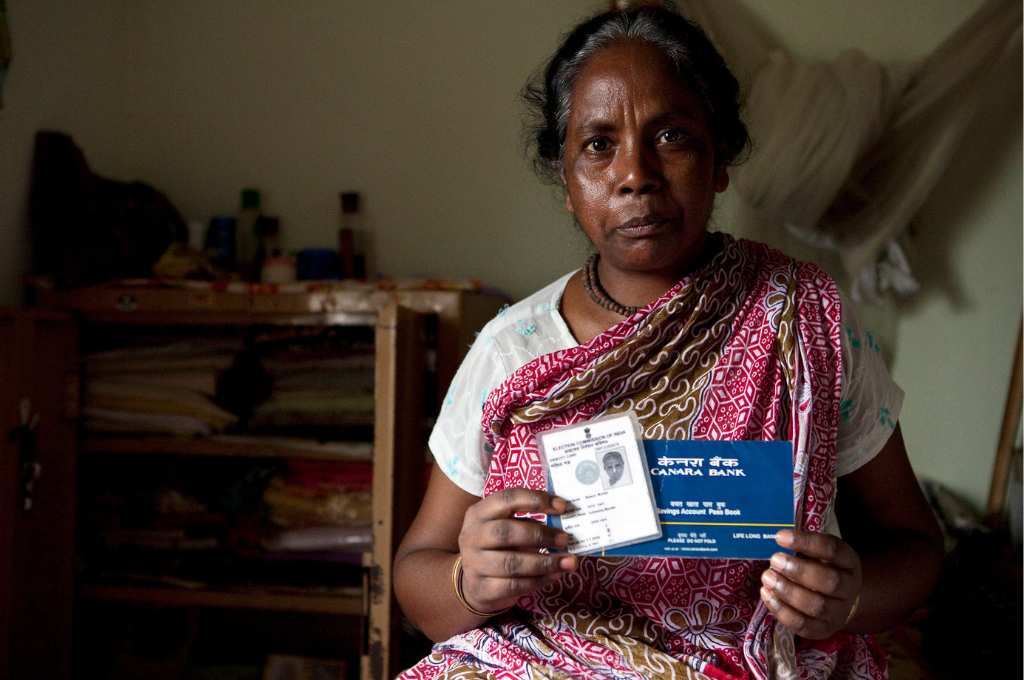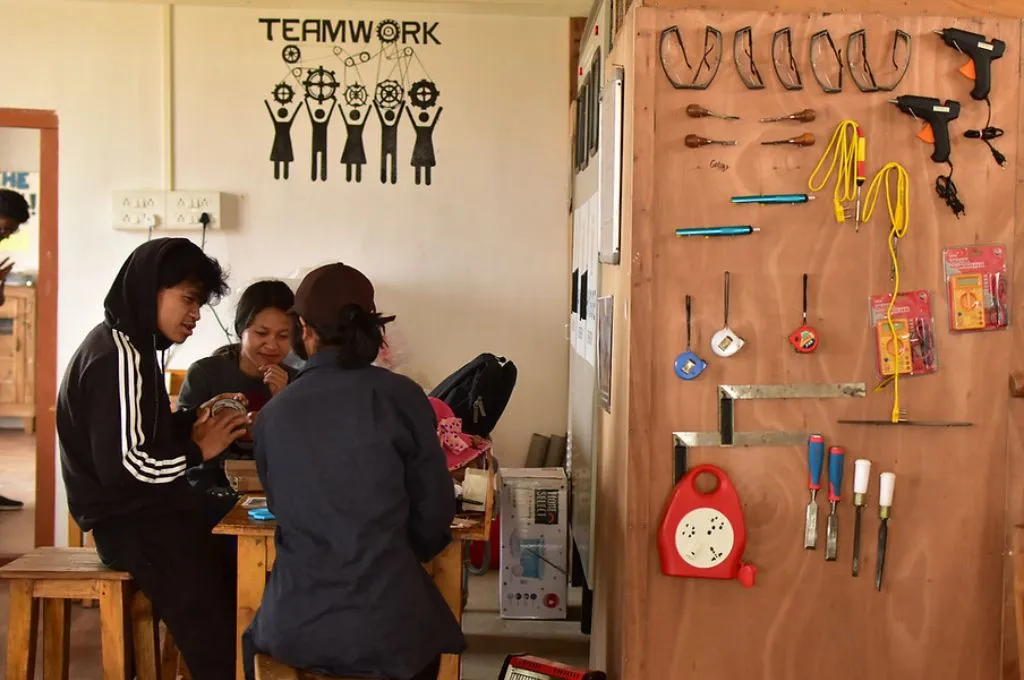According to the 2011 census, India has more than 2.68 crore persons with disabilities (PwDs). The Rights of Persons with Disabilities (RPwD) Act, 2016, places responsibility upon the government to enact effective measures that can ensure equal rights for PwDs. The measures would need to provide social protection to PwDs, which can help them overcome inequalities stemming from reduced employment opportunities, added costs associated with disabilities, decreased economic resilience, and other related factors.
One such social protection measure is the Indira Gandhi National Disability Pension Scheme (IGNDPS), which was introduced in 2009 to provide disability pensions of INR 300 to PwDs in the 18–79 age group and INR 500 for those who are 80 years or older. To be eligible for the scheme, an individual must have severe (80 percent or more) or multiple disabilities and must fall below the poverty line. Despite enforcing strict eligibility criteria and providing low pensions to PwDs, the scheme received a reduced budgetary allocation in the Union Budget 2023–24. This reduction has been attributed to the constantly rising underutilisation of the resources allocated to states/UTs for implementing the scheme.
The eligibility criteria of the IGNDPS prevent more than 95 percent of PwDs from accessing its benefits. An analysis of the Survey of Persons with Disabilities (NSS 76th Round) reveals that only 5 percent of PwDs meet the eligibility criteria of the scheme. This finding is even more alarming when we consider that the data used in the survey is from the 2011 census, which has been notorious for undercounting PwDs.
Why IGNDPS does not work
It is imperative to highlight some of the gaps in the scheme to understand why its success has been limited.
1. Outdated and exclusionary eligibility criteria
The logic of restricting benefits based on the severity or number of disabilities follows from the Persons with Disabilities Act of 1995. Even though the more recent RPwD Act offers special provisions for people with benchmark disabilities (40 percent), the IGNDPS has not been updated to reflect this. The scheme further excludes children with disabilities, and this presents financial challenges for the parents of these children.
As per official sources, the IGNDPS still uses the below poverty line (BPL) census of 2002 to identify which PwDs are poor enough to avail of its benefits. The guidelines of the National Social Assistance Programme (NSAP) hold states/UTs responsible for maintaining the eligible beneficiary database. A recent audit of the NSAP by the Comptroller and Auditor General of India highlights that only 11 of 35 states and UTs have maintained BPL lists used for identification of beneficiaries. Out of these 11, only Kerala and Haryana had prepared an eligible beneficiaries database. Although the Socio-Economic Caste Census (SECC) of 2011 has replaced the old BPL lists in several welfare schemes for better identification of beneficiaries across welfare schemes, the IGNDPS has not adopted it. Following the old BPL list has led to the exclusion of 84 percent of the PwDs with severe disabilities who fall in the lowest income decile.

2. Inadequate compensation
The central government provides INR 300 as a monthly pension, recommending states contribute an equivalent amount to provide decent assistance to PwDs in line with the RPwD Act. Due to the lack of a mandate, the amount reaching beneficiaries is highly skewed across states—ranging from INR 300 in Bihar to INR 3,000 in Andhra Pradesh.
As per the RPwD Act, the pension for individuals with disabilities should be at least 25 percent more than comparable schemes for others, accounting for the extra costs related to disability. Despite providing higher pension amounts compared to the INR 200 per month offered by similar schemes for widows/the elderly, it remains inadequate at covering the extra costs of disability.
3. Strict document requirements
To avail of the scheme, an individual must possess the correct documents, including an Aadhaar card and a disability certificate issued by the state. But acquiring an Aadhaar card can be a harrowing experience for PwDs, as Aadhaar enrolment centres often lack wheelchair accessibility and an unsympathetic attitude from the staff results in repeated visits to the centres.
The NSS Survey on Persons with Disabilities (2017–18) indicates that only 28.8 percent of PwDs possess a state-issued disability certificate, which is a prerequisite for accessing the pension. Furthermore, the mandate for a Unique Disability Identity (UDID) to access disability schemes introduces the potential for more exclusion, given the array of difficulties associated with securing a UDID.
4. Lack of social audit of the scheme
In its NSAP guidelines, the Ministry of Rural Development (MRD) mentioned that states should earmark at least 0.5 percent of their total budgetary allocation for social audits of schemes. The social audit of schemes is undertaken by potential beneficiaries and is recognised as crucial to maintaining a scheme’s transparency and accountability. In 2018, a letter issued by the MRD stated that states/UTs had not been conducting social audits.
Social audit guidelines and a standard operating procedure were thus prepared in order to launch a pilot to address the failure to audit across 22 states. The reports from this pilot social audit in FY 2021–22 highlighted common implementation gaps across states, including limited awareness, administrative loopholes, and a lack of effective beneficiary targeting as well as administrative data.
Strengthening the IGNDPS
Based on these gaps, the following recommendations can be considered to ensure that the scheme is more beneficial to PwDs.
- Relaxing the scheme’s eligibility criteria: The scheme should be modified to make the eligibility criteria inclusive of children with disabilities and extend disability pension to all persons with benchmark disability (40 percent disability).
- Increasing the disability pension amount: The pension amount under IGNDPS was last updated in 2012 to INR 300 per month from INR 200 per month. The current disability pension is abysmally low and needs to be adjusted regularly based on the Consumer Price Index. Further, states should be mandated to (at least) match the central government’s contribution.
- Changing the approach to identifying beneficiaries: Various expert committees in the past have recommended that the MRD should use data from the SECC, rather than the BPL lists, to identify beneficiaries. However, doing this would still leave out several eligible PwDs as the SECC too has now become outdated. To address this, the government plans to identify beneficiaries through the National Social Registry. This database will use Aadhaar cards to integrate religion, caste, income, property, education, marital status, employment, disability, and family tree data of every citizen.
- Using accurate data: Currently, the 2011 census and Survey of Persons with Disabilities are the two main sources of the prevalence of disability in India. It has been reported that 2.2 percent of the Indian population experience disability. This figure is contested as it grossly underestimates the number of PwDs in India. Further, there is a dearth of disability-specific disaggregated data across sectors such as health, education, poverty alleviation, employment, and justice. Therefore, reliable data should be collected to ensure equitable participation of PwDs as envisaged under the scheme. Additionally, as specified in the NSAP guidelines, states must ensure that all the local authorities are maintaining correct records of beneficiaries and funds. This data should then be uploaded to the NSAP-MIS portal of the MRD.
- Streamlining the documentation process: Difficulty in accessing Aadhaar and the poor penetration of disability certificates should not be a roadblock to accessing the scheme. The scheme should therefore serve deserving beneficiaries without any documentation mandates until it achieves 100 percent coverage. Furthermore, various states have implemented the scheme based on different eligibility criteria. For instance, Rajasthan has reduced the severity of disability to 40 percent, whereas Delhi and Kerala use an annual income criterion of below INR 1,00,000 to identify eligible PwDs. This lack of uniformity leaves out beneficiaries and prevents statewise comparisons of the scheme’s implementation.
- Regularising the social audit process: The MRD should ensure timely appropriation of budgetary costs to enable states to undertake the social audit. The ministry should also push all the states to conduct social audits periodically and make audit reports public to further bolster accountability.
Being the only national-level financial assistance programme for PwDs, the disability pension scheme is of immense significance. Thus, it is essential to focus on its implementation and ensure effective and successful disbursements. Doing so will also uphold the value of leaving no one behind as enshrined in the Sustainable Development Goals.
—
Know more
- Read the policy memo that this article draws from.
- Learn about the continually declining budget allocations for disability welfare in India.





